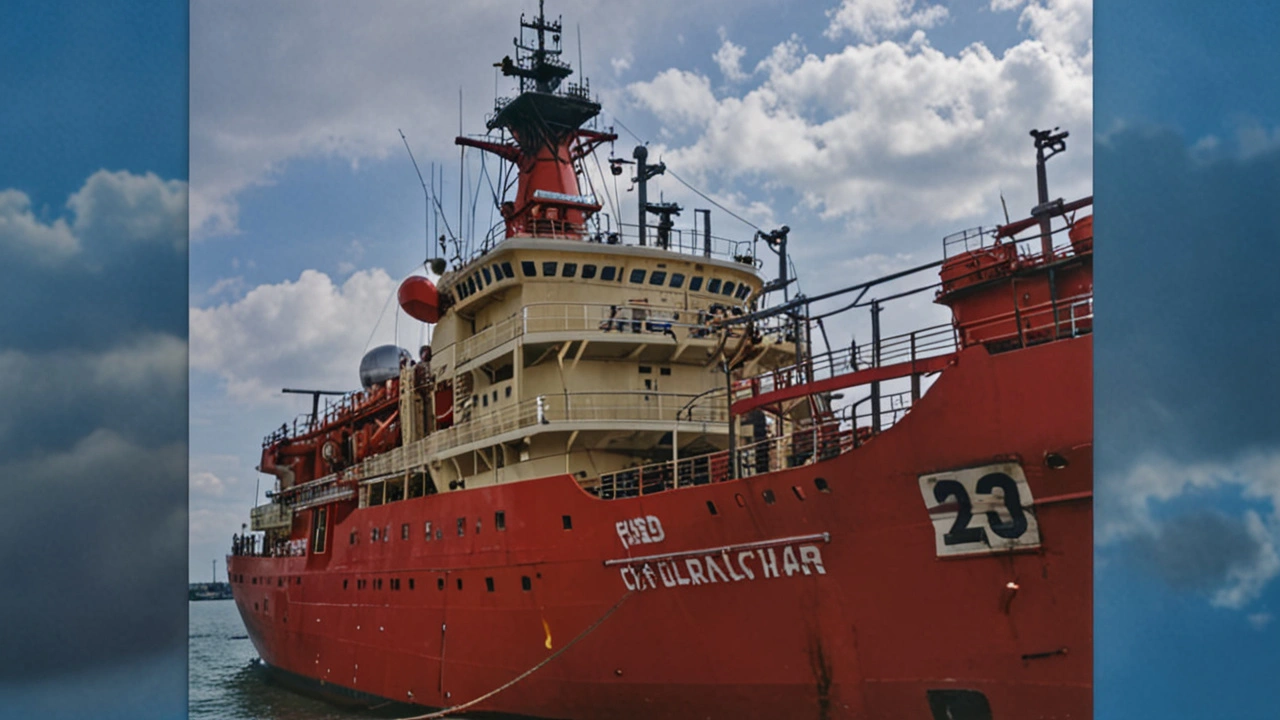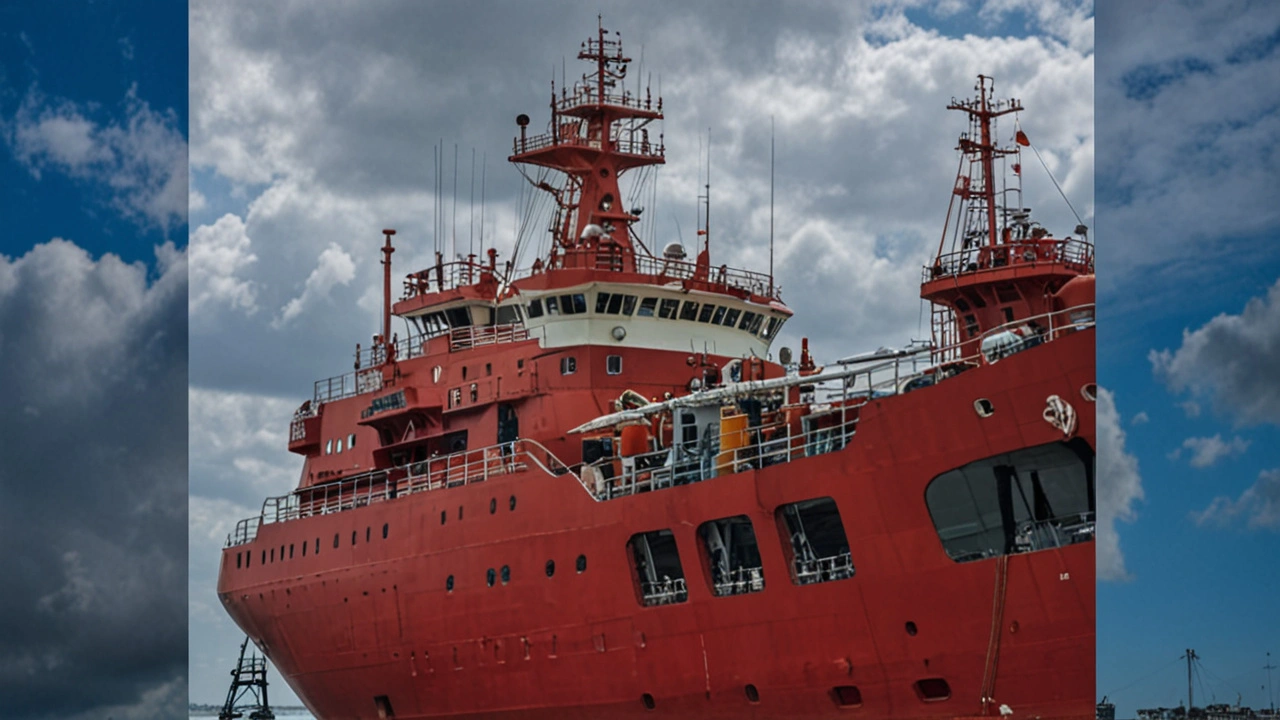Expedition to Titanic Wreckage Launches with Advanced Technology
On July 15, 2024, a new and highly anticipated expedition began its journey from Rhode Island, focusing on the infamous Titanic wreckage located in the depths of the Atlantic Ocean. This project, initiated by a company that holds the salvage rights to the Titanic, intends to use modern imaging technology and remotely operated vehicles (ROVs) to offer unprecedented visuals and data about the historic ship that tragically sank in 1912.
The team leading this expedition is equipped with cutting-edge equipment, including high-resolution cameras and sonar systems. These tools are expected to create detailed and accurate images of the Titanic's current state. Through this mission, researchers aim to study the structural integrity, the impact of deep-sea conditions on the wreck, and potentially uncover artifacts or new aspects of the Titanic's story that have remained untold for over a century.
The Significance of Modern Imaging and ROVs
The use of modern imaging and ROVs represents a significant leap in maritime archaeology and the study of sunken relics. Unlike earlier expeditions, which relied heavily on manned submersibles with limited time and capability at such depths, ROVs can spend extended periods underwater. They are operated remotely, allowing experts to navigate through the wreckage intricately and capture high-definition footage and images without risking human life.
This technology enables the mapping of vast areas with far greater precision. The data collected will be essential in assessing how the Titanic has deteriorated over time and what factors are contributing to its ongoing decay. Additionally, the footage and images garnered by advanced ROVs can be used for educational purposes, bringing the story of the Titanic to life for new generations.

The Goals of the Titanic Expedition
The primary goal of this expedition is to document the current condition of the Titanic wreck. By doing so, researchers hope to understand better how the wreck is being affected by natural oceanic processes such as rusting and biological growth. The mission is also dedicated to preserving the legacy of the Titanic by ensuring that the knowledge and artifacts from the iconic site are recorded and possibly conserved for future study and public interest.
During the expedition, various aspects of the ship will be studied. The researchers will look at everything, from the bow and stern sections to scattered debris surrounding the wreck. It is a detailed and extensive survey that aims to cover as much of the site as possible.
Broader Implications and Public Interest
The expedition is not just about documenting the Titanic for historical purposes; it also holds broader implications for maritime study and ocean preservation. Understanding the rate at which iron and steel structures deteriorate at such depths can provide insights into the long-term impacts of underwater environments on marine vessels. This knowledge may influence how future shipwrecks are managed and whose preservation can serve educational and historical narratives.
Moreover, the Titanic continues to captivate the public's imagination. The ship's story is not merely one of tragedy but also of human ambition, engineering marvel, and the social dynamics of its time. As new details emerge from the depths, it reignites interest and passion in both history enthusiasts and the general public, making the continuous documentation of the Titanic a matter of great cultural importance.

How the Community Responds to Preservation Efforts
This mission, while primarily scientific, also brings into focus the broader issue of preservation of underwater cultural heritage. The Titanic site has been exposed to various salvage operations; some have been widely criticized for commercializing artifacts taken from the wreck. However, this expedition aims to strike a balance between scientific study and responsible stewardship of one of the most significant maritime heritage sites.
Many believe that any expedition to such a historic site should follow strict ethical guidelines, ensuring that the dignity and sanctity of the site are maintained. This expedition is seen as a step in the right direction, focusing on non-invasive methods to study and document the wreck. It is a sentiment echoed by marine archaeologists and historians who advocate for the protection and respectful exploration of underwater cultural sites.
Future Prospects and Ongoing Initiatives
As the expedition progresses, the data and images collected will be analyzed and shared with relevant scholarly communities and the public. There is hope that the findings will contribute to ongoing conversations about deep-sea exploration, the preservation of historic sites, and the lessons learned from maritime disasters. The mission could pave the way for future expeditions that utilize even more advanced technology to uncover the secrets held by the deep ocean.
In conclusion, the expedition launched from Rhode Island to the Titanic wreckage is a significant step towards understanding and preserving the iconic ship's legacy. Through modern imaging and remotely operated vehicles, this mission promises to provide fresh insights and bring the Titanic's story closer to today's audience. This long-term effort not only honors the memory of those who perished but also contributes to the broader field of maritime archaeology, conservation, and history.

Rajesh Soni
July 17, 2024 AT 01:29So the Rhode Island crew finally decided to dust off some ROVs and give the Titanic a 21st‑century selfie, huh? The high‑resolution multibeam sonar they're using can map the wreckage down to centimeter accuracy, which is a nice upgrade from the grainy mosaics of the ’80s. From a structural‑integrity standpoint, the iron hull is basically a massive corrosion experiment, and those new imaging suites will quantify the pitting rates in real time. I guess the data will feed into finite‑element models that predict how fast the ship will disintegrate under thermohaline stresses. All in all, it’s a solid addition to the existing body of marine‑archaeology literature, even if the hype train sounds a bit over‑cooked.
Nanda Dyah
July 28, 2024 AT 23:46It is pertinent to underscore that any methodological approach to the Titanic must adhere rigorously to UNESCO’s Convention on the Protection of the Underwater Cultural Heritage. The deployment of non‑invasive remotely operated vehicles aligns with the principle of minimal disturbance, thereby upholding the sanctity of the site. Moreover, the acquisition of high‑definition imagery should be coupled with stringent data‑sharing protocols to benefit the global scholarly community. One must also consider the legal ramifications of salvaging artifacts without explicit permission, which could contravene established international statutes. In this context, the current expedition appears to navigate the ethical landscape with commendable prudence.
vikas duhun
August 9, 2024 AT 22:03Behold! The abyss finally yields its secrets, and we watch the ghost of a legend dissolve before our very eyes.
Nathan Rodan
August 21, 2024 AT 20:20The Titanic has transcended its status as a mere maritime disaster to become a cultural touchstone that informs literature, cinema, and collective memory across continents. When the Rhode Island expedition sets sail with its cutting‑edge ROVs, it is not simply a scientific venture but also a pilgrimage that invokes the curiosity of millions who have been enthralled by the ship’s tragic narrative. From an archaeological standpoint, the high‑resolution imagery will enable scholars to reconstruct the vessel’s architecture with a fidelity previously unattainable, allowing for virtual walk‑throughs that can be integrated into educational curricula worldwide. Additionally, the sonar scans will reveal patterns of bio‑erosion and metal fatigue, data that are vital for comparative studies of other historic wrecks such as the Lusitania and the Mary Rose. By cataloguing debris fields, researchers can trace the distribution of personal effects, offering poignant glimpses into the lives of those who perished. The visual documentation also serves as a safeguard against the inevitable loss of the wreck to time, ensuring that future generations can experience its grandeur even after the physical structure has vanished.\n\nBeyond the scientific merits, the expedition stimulates public discourse on the ethics of deep‑sea exploration and the responsibilities we bear toward underwater heritage. It challenges us to reflect on the fine line between preservation and exploitation, especially in light of past commercial salvage attempts that sparked controversy. The involvement of an interdisciplinary team-maritime historians, engineers, marine biologists, and ethicists-embodies a model of collaborative stewardship that other nations could emulate. Moreover, the dissemination of findings through open‑access platforms democratizes knowledge, breaking the monopoly of elite institutions and inviting community participation.\n\nFrom a sociocultural perspective, the Titanic continues to embody themes of hubris, class division, and the fragility of human ambition, resonating anew as we confront contemporary challenges like climate change and technological overreach. The renewed visual narrative may inspire artists, writers, and filmmakers to reinterpret the story, fostering a living dialogue that keeps history relevant. In essence, this expedition is a bridge between the past and the future, a conduit through which the lessons of 1912 can inform present‑day maritime policy and safety standards.\n\nFinally, the data collected will contribute to the broader corpus of marine‑archaeological methodology, refining techniques for deep‑sea imaging, autonomous navigation, and artifact documentation. As we gaze upon the illuminated hull on a screen thousands of miles away, we are reminded that curiosity, when coupled with responsibility, can illuminate even the darkest corners of our planet’s history.
KABIR SETHI
September 2, 2024 AT 18:37While the cultural analysis is interesting, the real value lies in the raw data sets that will soon be uploaded to public repositories, so anyone can run their own pattern‑recognition algorithms on the hull deformation. Don't forget that the commercial stakeholders will be watching these releases closely.
rudal rajbhar
September 14, 2024 AT 16:54One might contemplate that the oceanic grave serves as a reminder of humanity's fleeting grasp on mastery, and that the act of observing, rather than extracting, aligns with a deeper reverence for the unknown. This perspective does not diminish the scientific merit but rather enriches it with an ethical dimension that should guide our methodologies.
tanay bole
September 26, 2024 AT 15:12The deployment timeline appears well‑coordinated, with the ROVs scheduled for multiple dives to maximize coverage while minimizing disturbance to the surrounding marine fauna.
Liz Lessner
October 8, 2024 AT 13:29Whoa, that's rly cool! The team seems to have thought of everything-like the power backup for the sonars and the way they’ll keep the ROVs from getting tangled in the wreckage. I hope they share the vids soon so we can see the old ship in all its rusty glory.
Chance Remien
October 20, 2024 AT 11:46The epistemological implications of capturing high‑resolution visual data from a submerged cultural artifact extend beyond mere documentation; they invite a reassessment of how we construct historical narratives from material evidence. By integrating these images with archival records, scholars can triangulate disparate sources, thereby enhancing the robustness of historiographical interpretations. It is imperative that the resulting corpus be curated with rigorous metadata standards to ensure future reproducibility.
Arjun Dode
November 1, 2024 AT 09:03Yo, that's lit! Can't wait to see the 4K footage of the grand staircase and pretend we're on a virtual cruise. This is exactly the hype we need to get more kids into marine science.
Anna Lee
November 13, 2024 AT 07:20Hey guys, isn't it just wonderful, how technology finally lets us peek at the Titanic's hidden corners, and think about all those stories waiting to be told, while we all sit here, glued to our screens, dreaming of the deep sea, right?
Mayank Mishra
November 25, 2024 AT 05:37Indeed, the visual treasury will serve as an invaluable pedagogical tool, yet we must also press the expedition team to release the raw datasets promptly, so independent researchers can conduct their own analyses without bureaucratic delays.
Daniel Craine
December 7, 2024 AT 03:54The whole project sounds overhyped; sure, the cameras will capture some rust, but does anyone really need another glossy video of a sinking ship? It’s just another media circus, nothing more.
santhosh san
December 19, 2024 AT 02:11While the critique may hold merit, it overlooks the profound cultural resonance that such imagery sustains across generations, thereby justifying the endeavor.
Kristen VanPamel
December 31, 2024 AT 00:29We stare into the abyss, and the abyss, in turn, offers us its own reflection.